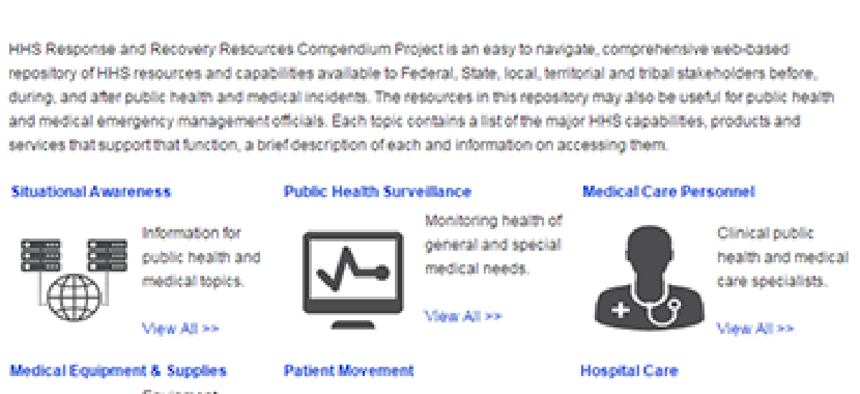HHS develops resource portal, radiation detection tech

The aim is to provide an easy-to-use online catalog for quick disaster response.

The Department of Health and Human Services recently unleashed online and in-real-life technology efforts aimed at helping the health care community deal with the consequences of natural and man-made disasters.
HHS last week launched what it said was the first online collection of federal resources and capabilities aimed at softening the punch of large-scale catastrophes on public health.
HHS's Office of the Assistant Secretary for Preparedness and Response unveiled the HHS Response and Recovery Resources Compendium to support state, tribal, territorial, local officials in managing health and emergency operations as they steer their communities’ disaster response and recovery operations.
The online compendium offers an easy-to-navigate web-based repository of HHS products, services and capabilities available to responders before, during, and after public health and medical incidents. The 24 categories spotlight relevant disaster resources available from HHS and its partners, a brief description of each resource, and information on accessing each.
Those two dozen categories range from patient movement to hospital care and from situational awareness to decontamination. Resources include platforms such as GeoHEALTH and the HHS emPOWER Map, which use Geographic Information System capabilities to support health response as well as consultation services, such as emergency planning, disease surveillance and tracking, and food, drug and device safety.
Resources also include personnel, such as medical staff from the U.S. Public Health Service and National Disaster Medical System who can deploy to communities to augment local hospital, shelter or public health staff.
Radiation test tech
The agency also made a more material, but unrelated, disaster recovery technology award to SRI International.
HHS's Biomedical Advanced Research and Development Authority (BARDA) awarded the company a $12.2 million contract to continue development of a diagnostic test that can be used to quickly determine absorbed doses of radiation following a radiological incident.
BARDA develops medical countermeasures to protect civilians from exposure to chemical, biological, and radiological or radionuclide agents.
According to an SRI statement, the technology is significant because in an "unanticipated radiologic or nuclear incident, large numbers of people could be exposed to radiation that may lead to severe health consequences post-exposure." Currently, it said, there is no technology that can help doctors on-site rapidly triage patient exposure to those types of radiation events.
Currently, if a person has absorbed a significant dose of ionizing radiation, there is nothing that can be done beyond waiting to see what symptoms develop, which roughly correlate with exposure level.
SRI's technology is based on a finger-prick blood sample for exposure that will determine whether a person has absorbed a clinically significant dose of radiation in less than 30 minutes.





